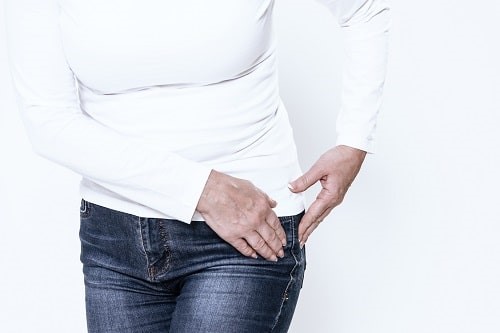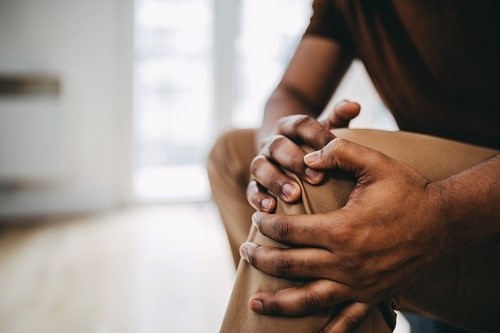Workers suffering from severe osteoarthritis may eventually require a knee or hip replacement, but there are many practical steps employers can take to keep them in work in the run-up to the operation – and help them successfully return afterwards.
Features
Hip and knee replacement: getting people back to work
Hip and knee replacement operations have become two of the most successful operations performed worldwide. Developed since the 1950s, they are the treatment recommended when a hip, or knee, joint has completely failed, most commonly as a result of severe osteoarthritis. So, what are the symptoms of osteoarthritis, what can employers do to support a worker waiting for a hip or knee replacement, and how can an employer help an employee successfully get back to work after such an operation?
Osteoarthritis
This is the most common form of arthritis in the world. Previously dismissed as ‘wear and tear’ or ‘age-related’, it is now clear that, rather than being an inevitable complication of old age, it is a dynamic process resulting from a complex interaction of genetic and other factors which leads to changes in the structure and function of the affected joint.
Risk factors include: a family history; female sex; age; obesity and joint damage. This can be acute (for example, a previous knee injury causing rupture of the anterior cruciate ligament), or more chronic – such as arising from repetitive kneeling/squatting associated with some occupations, such as carpet fitting.
 Depending on the nature of their work, people can return to work within a few days to one week of hip replacement surgery. Photograph: iStock
Depending on the nature of their work, people can return to work within a few days to one week of hip replacement surgery. Photograph: iStock
In the early phases, the joint may become intermittently painful and stiff, often most noticeably at night while it is resting. Over time, the muscles around the joint become visibly thinner and wasted and bony changes might take place to the shape of the joint so that the leg becomes knock-kneed or bow-legged. Limping might occur.
People often report that their joint makes noises (clicking, grinding) and the pain may become more persistent and require medication. Inside the joint, many changes take place. The synovial fluid (which is usually viscous and nourishing), becomes less viscous and more dilute with some inflammatory changes; disorderly bone growth occurs (particularly at the joint margin); tendons, ligaments and muscles thin and weaken; and cartilage develops cracks and fails to repair, reducing its ability to shock absorb for the joint.
Managing osteoarthritis
Many people will never need a joint replacement, even with quite severe changes of osteoarthritis. In fact, structure and function of the joint and pain are rather poorly correlated. The most important way to manage osteoarthritis is to remain physically active and maximise use of the tendons, ligaments and muscles around the joint so that it can keep working.
For many patients, this can seem counter-intuitive. Young in life, we are often taught that if a body part hurts, it is best to rest it. For an acute sprained ankle, for instance, this is the best advice for the first 24 hours. However, the same principle does not apply with osteoarthritis and pain often equals gain if the patient works hard at maintaining muscle strength.
For hip and knee joints, general aerobic fitness, leg strengthening exercises, swimming and cycling are very effective ways to maintain mobility and ultimately control pain. If an individual is overweight, there is also proven benefit from losing weight, even a small amount.
 Some people find it difficult to ‘adjust’ to a new knee. Photograph: iStock
Some people find it difficult to ‘adjust’ to a new knee. Photograph: iStock
However, it is important to control pain so that the exercises can be performed and pain relief can be obtained from topical (i.e. applied onto the body) gels/ointments; applying warmth or cold to the joint (such as hot or cold packs); and/or taking paracetamol or ibuprofen. The latter can be purchased over the counter but the instructions must always be followed when taking them and medical advice must first be obtained if an individual has other medical conditions.
If pain remains poorly controlled, it is important the individual consults their GP, as they may be prescribed stronger pain relief medicine. The GP may also refer the individual to others – such as physiotherapists, occupational therapists or specialist nurses – who can offer advice on approaches such as exercises to build up muscle and to strengthen the joints to help ease the symptoms and maintain mobility.
Also, pharmacists can advise on over-the-counter, non-prescription pain relief medication and podiatrists can advise on the use of orthoses (insoles) to wear in shoes to maintain a healthy gait. These can help to spread the body’s weight more evenly, therefore relieving some of the pressure on the joints in the legs while walking.
These types of measures can help to maintain muscle strength around the hip or knee joint, in turn helping it to keep working; reducing symptoms and helping the individual to maintain their mobility.
What do employers need to know about osteoarthritis?
Osteoarthritis is such a common condition, that in any workforce that includes people aged over 45, some will be affected by it now and others will in the future (as many as 60 per cent of people will have signs of osteoarthritis by the age of 60).
Osteoarthritis can affect most joints in the body but causes most problems in the thumbs, finger joints, neck, back, hips, knees and big toes. Women are more commonly affected than men. Employees may develop pain and stiffness and may have disturbed sleep because of the pain. This could potentially cause them to feel fatigued at work, which might affect their productivity, for instance.
Although symptoms vary, people tend to have worse symptoms if they:
- Use the affected joints for prolonged periods of time repetitively – for example, factory workers screwing/unscrewing components with finger and thumb osteoarthritis
Work in cold or wet conditions – for example, a butcher with knee osteoarthritis standing up in a cold or refrigerated room - If the joints are stressed/loaded repetitively – for example, a farmer with hip osteoarthritis standing up and twisting their body repeatedly and for long periods during harvesting.
Employers can help by, for example:
- Providing work that offers as much variation as possible in tasks – for example, allowing a desk-based worker with knee or hip osteoarthritis to incorporate exercise (or work tasks that involve exercise) into their day, as the pain from osteoarthritis often increases if the joints are not moved regularly
- Giving autonomy so individuals can choose how to do their work to best suit their arthritis – for example, someone with knee or hip osteoarthritis may wish to spend periods sitting rather than standing at work to cope with the pain and symptoms, and will prefer to take rest breaks when they experience symptoms, rather than at pre-set times
- Offering support and understanding when symptoms fluctuate
- Controlling workloads (physical and mental) to meet the employee’s capability
- Providing empathy and appreciation for an individual’s efforts.
It is also important to check if staff who operate machinery or carry out safety-critical tasks are taking strong prescribed pain-killing medication for osteoarthritis which might impair their performance (such as causing drowsiness), and therefore create a dangerous situation at work.
 Professor Karen Walker-Bone is professor of occupational rheumatology and director of the Monash Centre for Occupational and Environmental Health in Australia.
Professor Karen Walker-Bone is professor of occupational rheumatology and director of the Monash Centre for Occupational and Environmental Health in Australia.
Most people with osteoarthritis can and will remain working with minimal extra support. However, the five measures listed above should be considered, where appropriate, for all workers in all settings regardless of their medical needs – both those with osteoarthritis and those without the condition. This is because these measures will usually lead to increased job satisfaction, employee loyalty and productivity.
When a hip or knee replacement is required
If an individual suffers extreme pain despite treatment for hip or knee joint osteoarthritis – and/or their mobility is severely impaired because the joints are severely damaged – they may be offered a hip or knee joint replacement, providing they are fit for surgery.
These operations are undertaken electively (i.e. planned rather than an emergency procedure) by orthopaedic surgeons. For most people in the UK, they will take place after a period of time on a waiting list.
It is now well-established that people should aim to be at their fittest before such an operation. This means they should try to stay as active as they can in the weeks and months beforehand – adopting the same principle of trying to build up and maintain their fitness as someone would take if they were training for a big sporting event, like a mini-marathon.
People who are fit have fewer complications, spend less time in hospital after the operation and get far better outcomes after the procedure. Therefore, it is vital that the individual tries to maintain physical exercise and mobility in the run-up to the operation, as strengthening the muscles around the knee or hip will aid their recovery.
Evidence has shown that people are more likely to return to work after knee or hip replacement surgery if they have been able to keep their job while experiencing hip or knee joint osteoarthritis and while waiting for the operation. The evidence also shows people are even more likely to return if they have not taken sickness absence because of their hip or knee joint before the operation.
Therefore, employers should do their best to accommodate a worker to remain in the workplace leading up to a hip or knee joint operation and to find ways to help them avoid taking sick leave. Measures that might help include:
- Rotating the individual to different work tasks – such as desk-based administrative work or sharing heavier tasks with other colleagues
- Allowing more rest breaks to help them cope with the symptoms
- Allowing shorter or flexible working hours, again to help them cope with the symptoms
- Enabling them to commute to/from work outside of the busiest times if they need to take public transport and offering car parking near the workplace – for instance, this can help if someone is struggling to walk or climb stairs, or experiencing a lot of pain while doing so.
Hip replacement
Hip replacement operations were introduced some time before knee replacements and have developed remarkably since they were first made available.
The materials used in the replacement artificial ball and/or socket have been highly refined, and the incisions through which surgeons operate – and the procedures for rehabilitation – have all been revolutionised.
As a result, many people will only need to stay in hospital for one or two nights after the procedure. They will then spend a short period of time at home undergoing rehabilitation (such as exercises to strengthen the hip muscles) before returning to normality.
Depending on the nature of their work, people can return to work within a few days to one week of the surgery. Those who need to return to heavy physical work are usually advised to make a phased return starting three to four weeks after surgery. However, they can be back in the workplace doing less physically demanding work sooner than that.
Knee replacement
The knee replacement was a more difficult operation to develop than the hip replacement because the knee involves three bones, two joints and a patella (i.e. the knee-cap). For that reason, some early knee replacements were not very successful and much development has taken place to ensure the success of the procedure.
For the most part, surgery now is as minimally intrusive as possible and some patients will have ‘partial’ knee replacements involving only one compartment of their knee. Current knee replacements are almost as successful as hip replacements and surgeons are much better at selecting the patients who will get the best outcomes.
Despite this, the length of stay in hospital is usually slightly longer than after a hip replacement and post-operative rehabilitation at home may take a little longer. Although, for some, the return to work can still be quick (one to two weeks) the majority of patients will require three to four weeks or longer to return.
There is clear evidence that people who follow the post-operative physiotherapy exercises provided and put in the necessary hard work have the best surgical outcomes in terms of issues such as improved mobility and reduced pain. In short, being passive does not produce the best results.
Also, some people find it difficult to ‘adjust’ to a new knee, which can make them reluctant or fearful to carry out the physiotherapy exercises required to speed up their return to a good or improved level of mobility and ensure they get the best results from the operation. The scar down the front of the leg is much more obvious than the one after a hip replacement and this may act as an initial psychological barrier to ‘accepting’ the joint and being prepared to trust it to do the necessary exercises. In short, the extent of the scar can create an unfounded fear of damaging it through exercise – though this is very unlikely if the physiotherapy instructions are followed correctly.
Principles of return to work after hip and knee replacements
Most patients returning to work after hip or knee replacement surgery are much less disabled than they were before the operation and need much less help at work than they did before.
Although it may take up to three to six months for someone to fully recover, work can be an excellent part of rehabilitation. It is somewhat easier to get back to full fitness at work after a hip rather than a knee replacement. However, most people will be able to return to work after both operations (either to their previous role or an amended or different role or job), especially if their employer takes appropriate steps to support their return.
An important consideration when returning is the commute. Some surgeons advise not driving for four to six weeks following a hip or knee replacement, which can affect an individual’s ability to return to work. However, the UK government’s Access to Work scheme will in certain cases provide a financial grant to cover some or all of the cost of taxi fares in the short term.
Any workplace adjustments that were helpful to the worker before the operation may also be helpful afterwards, such as extra rest breaks. However, whenever possible and appropriate, both the employer and the worker should have a clear aim that the individual will return to their previous type, level and intensity of work without any special adjustments after a few weeks or months.
Nevertheless, for some people it may be much harder to return to very physically demanding work after a hip or knee replacement. For those people, it might be more realistic and appropriate for the employer and individual to consider whether the worker should have an amended role or tasks or be redeployed in some way to accommodate their physical condition after the operation.
However, as with any adaptations when an employee has a health condition or disability, these need to be discussed and agreed between the employer and the employee.
Professor Karen Walker-Bone is professor of occupational rheumatology and director of the Monash Centre for Occupational and Environmental Health in Australia. She was previously director of the UK’s MRC Versus Arthritis Centre for Musculoskeletal Health and Work.
FEATURES

Why line managers play a vital role in workplace wellbeing
By Marcus Herbert, British Safety Council on 03 September 2023
The behaviours of line managers can have a positive or negative impact on employee health, wellbeing and engagement, so it’s vital managers get staff feedback on whether their management style is supportive or negative, and have regular check-ins so workers can raise concerns about their wellbeing.

Watercooler Event to hone in on eight trends in employee health and wellbeing
By Claire Farrow, Make a Difference Events & Media on 15 April 2024
The free-to-attend Water Cooler Event at ExCeL London on 23–24 April will see more than 6,000 workplace experts coming together to explore the latest thinking, solutions and best practice for supporting and boosting employee wellbeing, diversity and workplace culture.

Sedentary working and how to combat the ‘sitting disease’
By Gavin Bradley, Active Working on 05 April 2024
Prolonged and excessive sitting poses a major risk to our health, but the Get Britain Standing campaign and On Your Feet Britain Day on 25 April are a great way of encouraging workers to sit less and move more.



